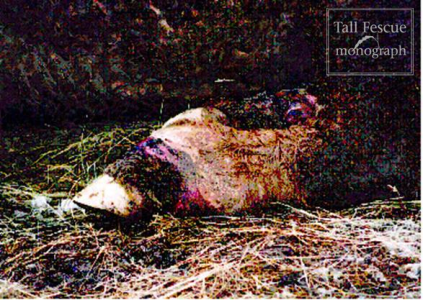KY 31 contains an endophyte (which is a fungus, but don't let that bother you). This endophyte is what makes it hard on cattle and sheep, but it is also the reason that tall fescue makes such a great winter grazing forage. KY31 is extremely persistent and aggressive and will eventually return to any pasture it has been 'eliminated' from. I'm glad you used the term 'novel' as that tells me you are already familiar with some endophyte alternative tall fescues. The novel fescues you are referring to are more than likely the same tall fescue species as the KY 31. The difference is the endophyte. The endophyte in the KY 31 is the 'hot' endophyte that has toxicity effects on the cows and sheep. The novel tall fescues you speak of have had the hot endophyte removed and replaced with an alternative endophyte that does not have the toxic effects of the KY 31. But, the alternative endophyte has most of the advantages that the 'hot' endophyte has. Specifically, allows the tall fescue plant to withstand heavy, even abusive, grazing practices as well as make the tall fescue an excellent grass to graze in the winter. New novel endophytes are being introduced all the time now that don't have the toxicity of the KY 31. The novels have great benefits like the KY 31, but the benefits don't quite reach the level of the KY 31, hence trying to improve the novels. In my book, the novels are better than the KY 31 hands down.
The KY 31 is more aggressive and will eventually encroach back into the stand of the novel you plant. The best approach to establish a novel variety is to begin by eliminating as much of the KY 31 as possible, and the seed bank. The best approach to this that I have been informed on is a technique referred to as 'spray, smother, spray'. It takes a year to accomplish, but I know of producers that are pleased with the results and have novel stands that have persisted for over 10 years, and longer, when they have done this.
I'm not sure if livestock develop a resistance to the hot endophyte, although they may. My understanding of that is that the extent of the problems the hot endophyte can cause will vary from year to tear and season to season.

